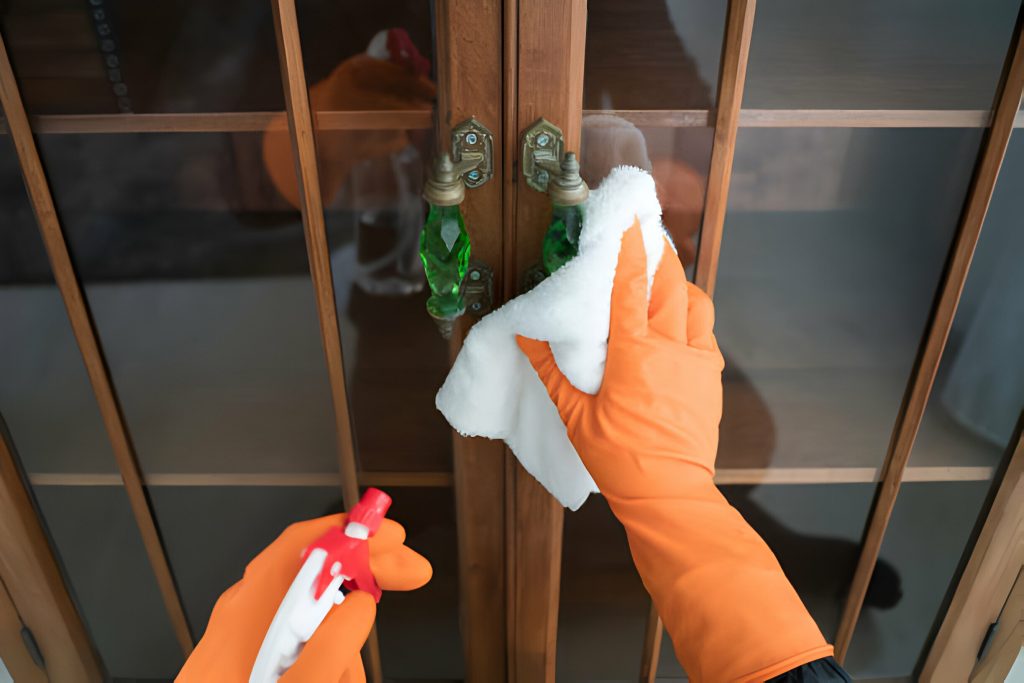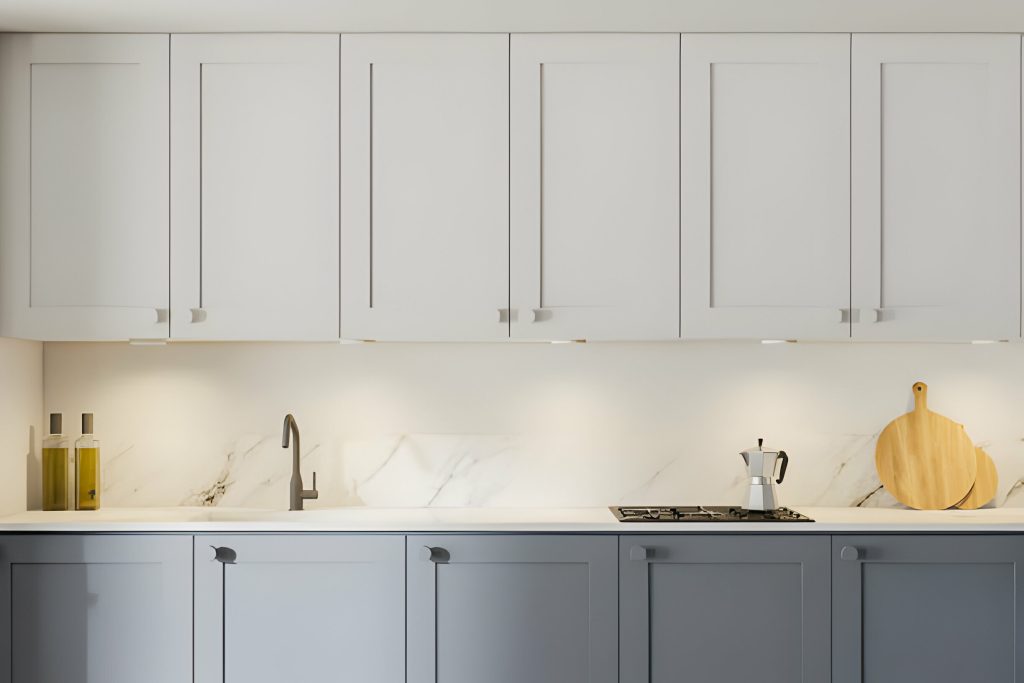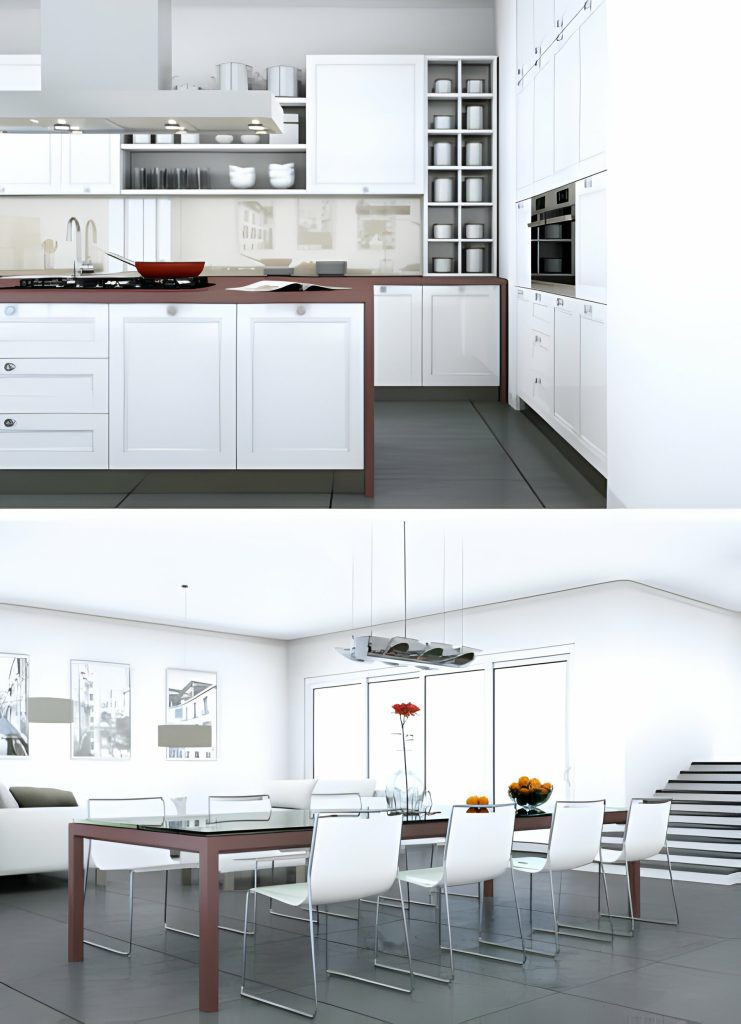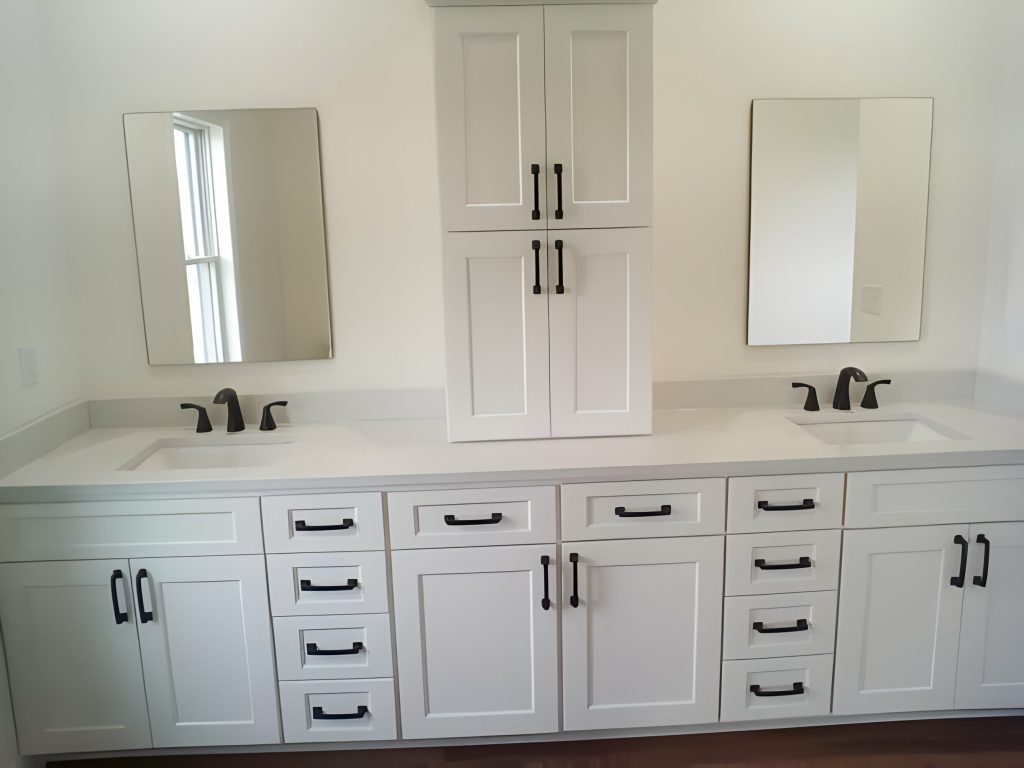If you have old glass cabinets that are in need of some TLC, this article is here to help. In just a few simple steps, you’ll learn how to assess the condition of your cabinets, gather the necessary cleaning supplies, and tackle stubborn stains and smudges on the glass. So grab your cleaning supplies and let’s get started on bringing back the shine to your old glass cabinets!
Assessing the Condition of Your Old Glass Cabinets
To assess the condition of your old glass cabinets, take a close look at the glass for any scratches, cracks, or signs of wear and tear. Evaluating the condition of your cabinets is essential before starting any cleaning or restoration process. Assess the damage and determine the restoration options available to you. If the cabinets have minor scratches or blemishes, you can consider polishing the glass to preserve their antique charm. However, if there are significant cracks or damage, it may be necessary to seek professional help or explore replacement options. By carefully evaluating the condition of your old glass cabinets and determining the best restoration approach, you can maximize their longevity and ensure they continue to add beauty to your space.
Gathering the Necessary Cleaning Supplies
Start by gathering all the necessary supplies for cleaning those vintage glass cabinets. Here’s a list to help you assess supplies, choose cleaners, use proper technique, and save time with eco-friendly options:
- Assessing Supplies:
- Check if you have enough microfiber cloths or lint-free cloths for cleaning the glass.
- Make sure you have a gentle glass cleaner that won’t damage the vintage glass.
- Consider using a soft-bristle brush for hard-to-reach areas.
- Have a vacuum cleaner with a crevice attachment to remove dust and debris from the cabinet corners.
- Choosing Cleaners:
- Look for a glass cleaner that is specifically formulated for vintage glass.
- Avoid using harsh chemicals or abrasive cleaners that can damage the glass surface.
- Consider eco-friendly options like vinegar and water solution or a homemade glass cleaner made with lemon juice.
- Proper Technique:
- Start by dusting the cabinet with a dry microfiber cloth to remove any loose particles.
- Spray the glass cleaner onto the cloth, not directly onto the glass, to avoid drips and streaks.
- Use gentle, circular motions to clean the glass, focusing on any stubborn spots.
- Dry the glass thoroughly with a clean, lint-free cloth to prevent water spots.
- Time-Saving Tips:
- Empty the cabinet before cleaning to save time and ensure thorough cleaning.
- Clean the glass cabinets regularly to prevent build-up and make future cleaning easier.
- Use a squeegee to quickly remove excess water from the glass for a streak-free finish.
- Consider using a glass polishing cloth for a quick touch-up between deep cleanings.
Remember to follow these tips and techniques to keep your vintage glass cabinets looking their best while also being mindful of the environment.
Removing Dust and Debris From the Glass Surface
First, gather a microfiber cloth and gently wipe away any dust or debris from the surface of the vintage glass cabinets. To clean old glass cabinets effectively, it’s important to use proper cleaning techniques. You can make your own DIY glass cleaner by mixing equal parts vinegar and water in a spray bottle. This natural cleaner is safe for the glass and helps remove hard water stains. When cleaning, be sure to avoid using abrasive materials that can scratch the glass. Instead, stick to soft cloths or microfiber towels. To prevent scratches, always wipe in a gentle, circular motion. By following these cleaning tips and using natural cleaners, you can restore the beauty of your old glass cabinets and keep them looking pristine.
Tackling Stubborn Stains and Smudges on the Glass
When tackling stubborn stains and smudges on the glass, it’s important to use gentle cleaning techniques and avoid abrasive materials. Here are some effective techniques for removing tough stains on glass cabinets:
- DIY remedies for tackling smudges on old glass cabinets: Mix equal parts white vinegar and water in a spray bottle. Spray the solution onto the stains and let it sit for a few minutes. Then, wipe it off with a soft cloth or sponge.
- The importance of proper maintenance for preserving the clarity of glass cabinets: Regularly clean the glass with a mild glass cleaner or a solution of dish soap and water. Avoid using harsh chemicals or abrasive scrubbers.
- Expert tips for preventing stubborn stains on glass cabinet surfaces: Use coasters and placemats to protect the glass from spills and stains. Wipe up any spills immediately to prevent them from drying and becoming harder to remove.
- Exploring eco-friendly cleaning solutions for old glass cabinets: Consider using natural cleaning alternatives such as lemon juice, baking soda, or a mixture of vinegar and water. These options are not only effective but also environmentally friendly.
Cleaning the Frame and Handles of the Glass Cabinets
To clean the frame and handles of your glass cabinets, begin by wiping them down with a cloth dipped in soapy water or a multi-purpose cleaning spray. This is an effective cleaning technique for glass cabinet frames. For the glass cabinet handles, it is important to choose the right cleaning products. Look for gentle cleaners that won’t damage the handles or leave residue behind. When removing dirt and grime from glass cabinet hardware, use a soft brush or toothbrush to gently scrub away any buildup. Be sure to prevent scratches and damage to the glass cabinet surfaces by using non-abrasive cleaning tools and avoiding harsh chemicals. Finally, to maintain the shine and clarity of your glass cabinet doors, regularly clean them with a glass cleaner and buff them with a lint-free cloth for a streak-free finish.
Addressing Any Mold or Mildew Issues
Now that you’ve learned how to clean the frame and handles of your glass cabinets, it’s important to address any mold or mildew issues that may arise. Mold and mildew can not only damage your cabinets but also pose health risks. Here are some steps to prevent mold and remove mildew from your glass cabinets:
- Preventing mold:
- Keep the cabinets well-ventilated to prevent moisture buildup.
- Regularly clean ventilation vents to ensure proper airflow.
- Address any water leaks or plumbing issues promptly to prevent moisture damage.
- Removing mildew:
- Mix equal parts vinegar and water in a spray bottle.
- Spray the affected areas and let it sit for a few minutes.
- Scrub the mildew with a soft brush or sponge.
- Rinse with clean water and dry thoroughly.
Restoring Shine and Clarity to the Glass Surface
To restore the shine and clarity of the glass surface on your cabinets, try using a mixture of vinegar and water. This DIY cleaning solution is effective in removing stubborn stains and preserving the clarity of your old glass cabinets. In addition to vinegar and water, you can also choose the right cleaning products specifically designed for old glass cabinets. When polishing your glass cabinets, it’s important to use gentle techniques to avoid scratching the surface. Expert tips for maintaining the beauty of antique glass cabinets include dusting regularly, avoiding abrasive cleaners, and using protective film or covers to prevent scratches or damage. By following these tips and using the right cleaning products, you can restore the shine and clarity of your old glass cabinets and keep them looking beautiful for years to come.
| Restoring Shine: Polishing Techniques for Glass Cabinets | Choosing the Right Cleaning Products for Old Glass Cabinets | DIY Cleaning Solutions for Stubborn Stains on Glass Surfaces |
|---|---|---|
| – Use a lint-free cloth to buff the glass for a shiny finish | – Look for cleaning products specifically designed for old glass cabinets | – Mix vinegar and water for an effective DIY cleaning solution |
| – Avoid using abrasive materials to prevent scratching the glass | – Read labels and choose products that are safe for use on glass surfaces | – Apply the cleaning solution to the stained area and scrub gently |
| – Consider using a newspaper for additional polishing | – Test the cleaning product on a small spot first to avoid damaging the glass | – Rinse the glass with clean water and dry thoroughly |
Protecting and Maintaining the Cleanliness of Your Glass Cabinets
To protect and maintain the cleanliness of your glass cabinets, it’s important to regularly dust the surfaces and use appropriate cleaning products. Here are some maintenance tips to help you prevent damage and keep your glass cabinets looking pristine:
- Dust regularly: Dusting the surfaces of your glass cabinets helps prevent build-up and keeps them looking clean and shiny.
- Use the right cleaning solutions: When cleaning your glass cabinets, make sure to use cleaning products specifically designed for glass surfaces. Avoid using abrasive cleaners that can scratch the glass.
- Take protective measures: Consider using protective film or covers to prevent scratches or damage to your glass cabinets. This extra layer of protection can extend the lifespan of your cabinets.
- Consider professional cleaning: If you want a deep clean and thorough maintenance, hiring professional cleaning services for your glass cabinets can save you time and effort. They have the expertise and specialized equipment to ensure a thorough cleaning and can provide you with the best solutions for your specific cabinet needs.
Tips for Preventing Future Build-up and Damage
To prevent future build-up and damage, it’s important to regularly maintain and care for your glass cabinets. Here are some tips to help you keep your glass cabinets looking their best:
| Preventing Scratches | Reducing Fingerprints |
|---|---|
| Avoid using abrasive cleaners that can scratch the glass. | Use a microfiber cloth to wipe down the glass to reduce fingerprints. |
| Place felt pads on the bottom of any items you place inside the cabinets to prevent scratching. | Use a glass cleaner specifically designed for display cabinets to remove fingerprints. |
| Organizing Storage | Removing Hard Water Stains |
|---|---|
| Use shelf liners to protect the glass shelves from scratches and spills. | Mix equal parts white vinegar and water, and spray it on the glass. Let it sit for a few minutes, then wipe it off with a clean cloth. |
| Use baskets or bins to keep smaller items organized and prevent them from scratching the glass. | For stubborn stains, make a paste with baking soda and water, apply it to the stain, and gently scrub with a soft cloth. |
| Preventing Moisture Buildup |
|---|
| Ensure proper ventilation in your kitchen to prevent excess moisture in the air. |
| Use a dehumidifier to control humidity levels if necessary. |
| Avoid placing wet or damp items directly onto the glass shelves. |
| Regularly check for any signs of moisture buildup and address the issue promptly to prevent damage to the cabinets. |
When to Seek Professional Cleaning Services for Old Glass Cabinets
If your old glass cabinets require professional cleaning services, it’s best to seek help from experts with the necessary tools and expertise. However, if you’re looking for cost-effective alternatives or prefer to tackle the task yourself, there are DIY methods for restoring the shine of old glass cabinets. Before making a decision, it’s important to consider the pros and cons of hiring professional cleaners for old glass cabinets. Additionally, there are common mistakes to avoid when cleaning old glass cabinets, such as using harsh chemicals or neglecting to clean the inside of the cabinet. To maintain the cleanliness of your old glass cabinets, follow these tips: regularly dust the cabinets, avoid using abrasive materials, and use a specialized glass cleaner for optimal results.



